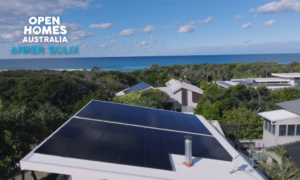Professor Ross Garnaut has released a discussion paper on an Australian emissions trading scheme, stating that the introduction of an ETS signals the opportunity for profound, long-term structural change for Australia. The paper argues for the need to design the scheme on the basis that it will ultimately be part of a global agreement on greenhouse gas mitigation.
“A global emissions trading scheme is clearly our end goal. I have looked at all the design issues through the lens of what would allow the most efficient and effective integration with international schemes,” says Professor Garnaut. The paper suggests fixed and clear limits on emissions through the establishment of defined emissions ‘trajectories’, which would transparently map the pathway to emissions reduction targets/commitments. Permits would be regularly auctioned in line with the trajectory.
“A long-term, firm trajectory for emissions reduction – which could only be tightened, not loosened, in line with emerging international commitments – would provide greater investor confidence and strengthen the credibility of the scheme,” he says.
Garnaut recommends four trajectories should be specified with the establishment of an ETS. The first up to 2012 will be based on Australia’s Kyoto commitments. The other three for the post-2012 period reflect increasing levels of ambition.
Stationary energy, industrial processes, fugitives, transport and waste should be covered from the outset of the scheme with agriculture and forestry to be included as soon as practicable, the paper states.
Garnaut says that ‘simplicity’ is the key to an effective ETS for Australia. The ETS discussion paper supports the auctioning of all permits, arguing that any increase in the price of goods or services, such as energy, will not be prevented through the free allocation of permits.
“Whether permits are allocated freely or auctioned to existing [electricity] generators, the price impact on households will be the same,” the discussion paper states.
“The auctioning of permits will generate very large amounts of revenue, and the Government will face many competing demands on how that is used. These will include from households affected by increased prices of goods and services, employees and communities dependent on emissions-intensive industries, and non-traded sectors whose costs are directly impacted,” says Professor Garnaut.
“The revenue should be spent on improving the productive or adaptive capacity of the economy, in ways that are consistent with reducing greenhouse gas emissions.
“Special attention must be given to consumers who will ultimately bear the cost of a carbon price, and in particular, low-income households,” he says. The discussion paper supports transitional assistance to trade-exposed emissions intensive industries (such as steel and aluminium manufacturers) that are unable to pass on the cost of a carbon price.
Energy Supply Association of Australia chief executive Brad Page says that time is needed to fully analyse what is a lengthy and complex report. He noted that while Professor Garnaut is aiming for a sustainable and economically efficient solution, there are aspects that warrant closer examination.
No price caps in the scheme, the auctioning of all permits, the method by which permit allocation revenues may be distributed and the ability to bank and borrow permits are complex features needing deliberation and analysis.
Of concern to esaa is Professor Garnaut’s opposition to financial support for disproportionately affected assets. Page says that the Association will respond to the discussion paper on this and related matters.













































